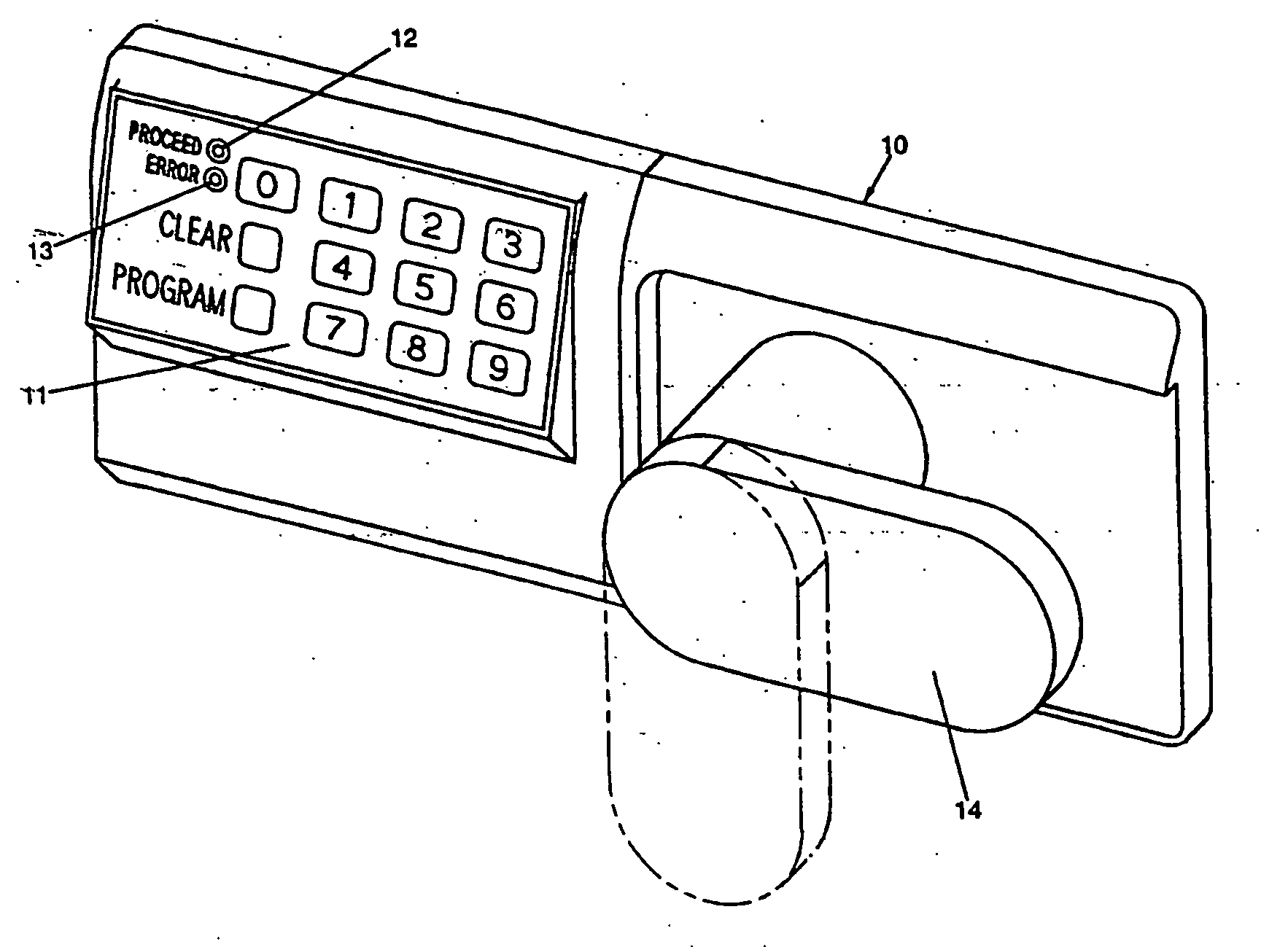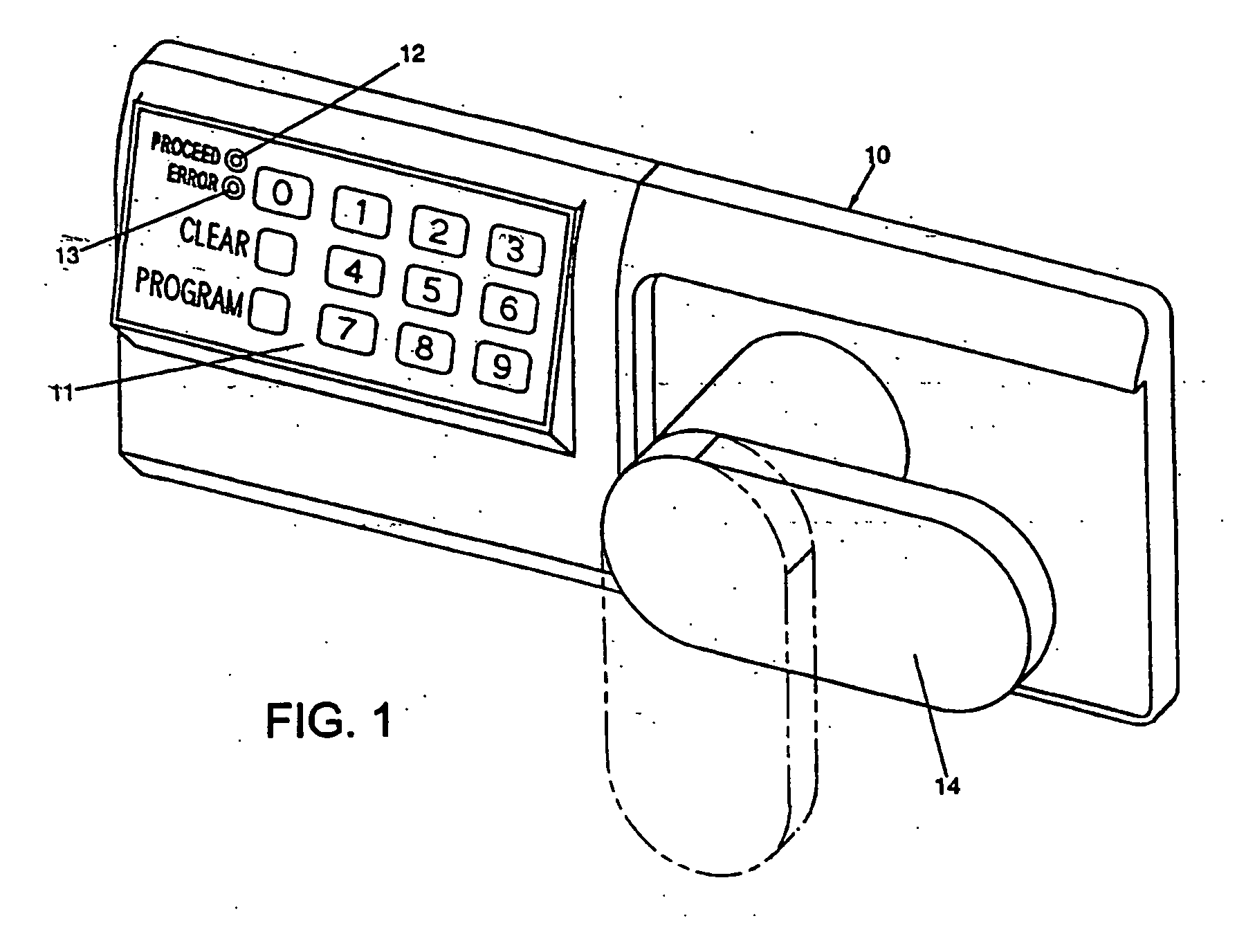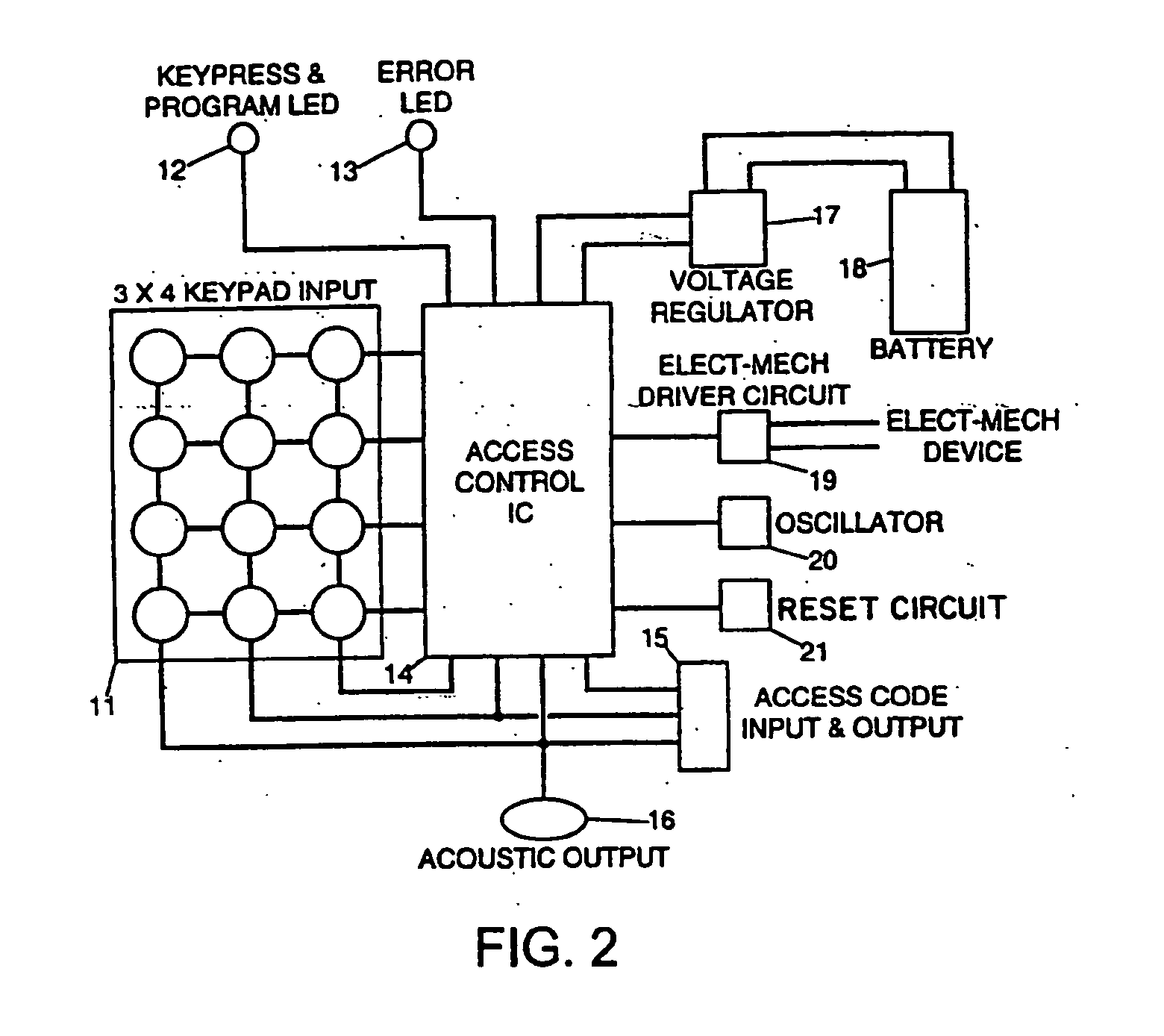Electronic access control device
a technology of electronic access control and vending machine, which is applied in the direction of anti-theft devices, program control, instruments, etc., can solve the problems of difficult code burning after the device has been manufactured, interrupt the manufacturing process, and difficulty in programming non-volatile memory, so as to improve security, facilitate manufacturing, and be more reliable to operate
- Summary
- Abstract
- Description
- Claims
- Application Information
AI Technical Summary
Benefits of technology
Problems solved by technology
Method used
Image
Examples
Embodiment Construction
[0073] Referring to the drawings, there is shown in FIG. 1 an illustrative electronic access control device 10 having a keypad 11, light emitting diodes (LEDs) 12 and 13, and a mechanical lever arm 14. In this illustration, the device is used as a lock for an office safe. The device can also be applied to various applications including locks for vending machines or amusement games.
[0074] The main components of the electronic access code device are shown in FIG. 2 which include a keypad 11, a microprocessor 14, an access code input and output 15, an acoustic output (a piezo ceramic bender, Model No. KB1-1541) 16, LEDs 12 and 13, a voltage regulator (LM2936Z-5.0) 17, a battery 18, an electromechanical driver output 19, an oscillator 20, and a reset circuit 21. Inputs to the device may take the form of a thumbprint scan, a retinal scan, or a magnetic strip input which may work in conjunction with a keypad or as a sole means of input. Outputs may take the form of an alpha-numeric displ...
PUM
 Login to View More
Login to View More Abstract
Description
Claims
Application Information
 Login to View More
Login to View More - R&D
- Intellectual Property
- Life Sciences
- Materials
- Tech Scout
- Unparalleled Data Quality
- Higher Quality Content
- 60% Fewer Hallucinations
Browse by: Latest US Patents, China's latest patents, Technical Efficacy Thesaurus, Application Domain, Technology Topic, Popular Technical Reports.
© 2025 PatSnap. All rights reserved.Legal|Privacy policy|Modern Slavery Act Transparency Statement|Sitemap|About US| Contact US: help@patsnap.com



